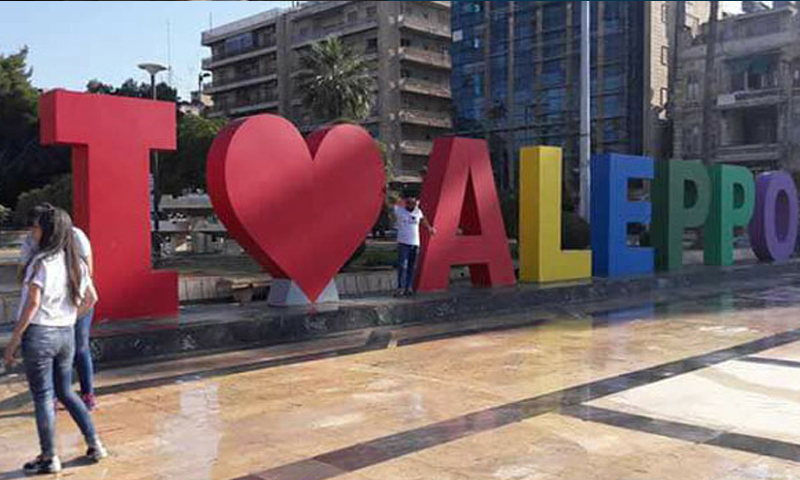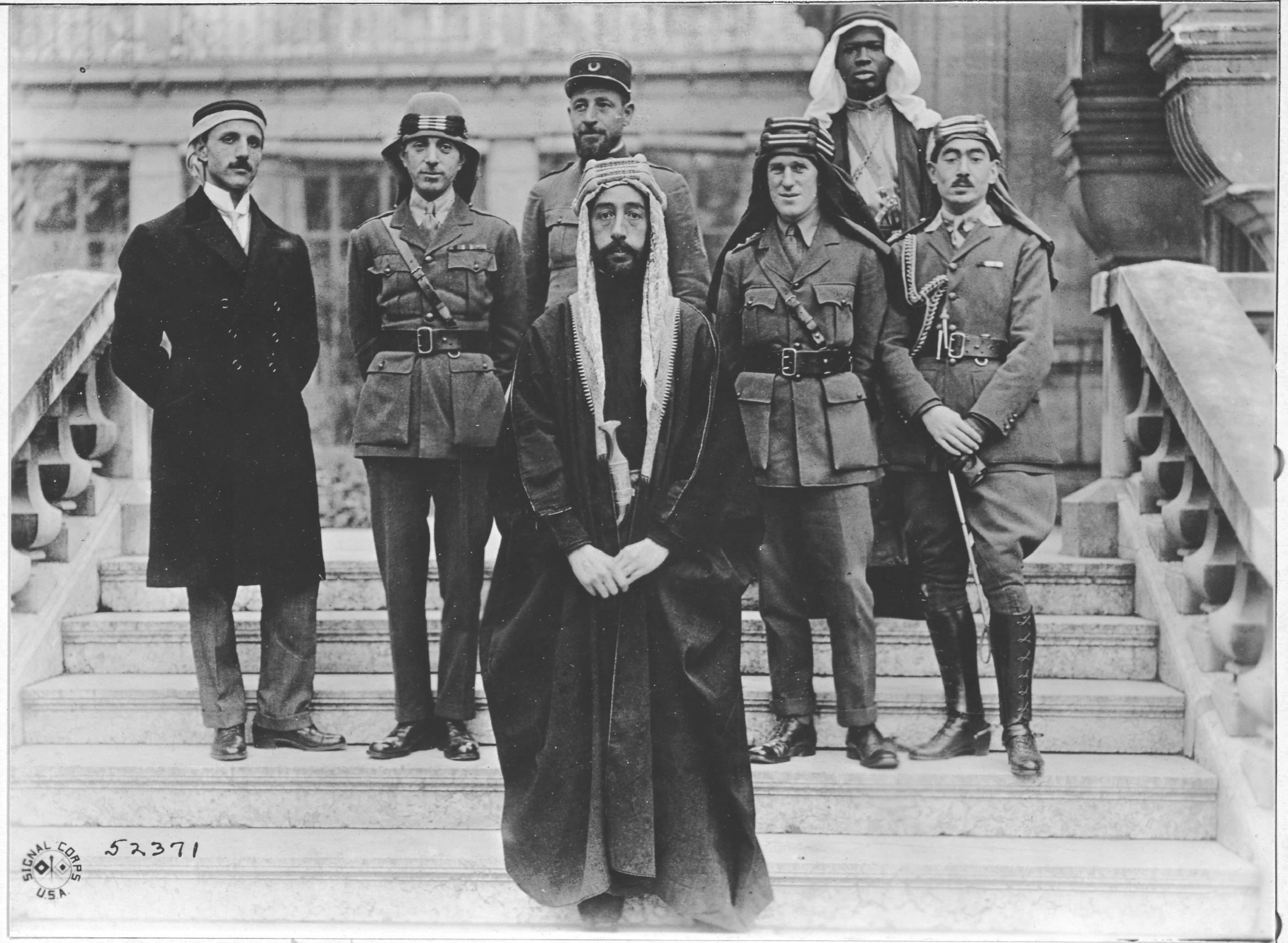|
King Faisal Street
King Faisal Street ( ar, شارع الملك فيصل) is a main street in central Aleppo, Syria. Located to the northwest of the Saadallah Al-Jabiri Square connecting the Aleppo Public Park with Al-Sabil Park. The street ends up with Shihan Square to the north of the city centre. History King Faisal street was founded in 1919, to connect al-Jamiliyah district at the city centre with al-Sabil park, through the Syriac district. It was named in the honour of Faisal I the king of Syria. In 1964, the Saint Matilda Melkite Greek church was opened on the street. Later in 1994, Al-Rahman mosque was built on the street, adjacent to al-Sabil park. The street served as a highway A highway is any public or private road or other public way on land. It is used for major roads, but also includes other public roads and public tracks. In some areas of the United States, it is used as an equivalent term to controlled-access ... until 2008 when the separating green row of trees was rem ... [...More Info...] [...Related Items...] OR: [Wikipedia] [Google] [Baidu] |
Aleppo
)), is an adjective which means "white-colored mixed with black". , motto = , image_map = , mapsize = , map_caption = , image_map1 = , mapsize1 = , map_caption1 = , pushpin_map = Syria#Mediterranean east#Asia#Syria Aleppo , pushpin_label_position = left , pushpin_relief = yes , pushpin_mapsize = , pushpin_map_caption = Location of Aleppo in Syria , coordinates = , subdivision_type = Country , subdivision_name = , subdivision_type1 = Governorate , subdivision_type2 = District , subdivision_type3 = Subdistrict , subdivision_name1 = Aleppo Governorate , subdivision_name2 = Mount Simeon (Jabal Semaan) , subdivision_name3 = Mount Simeon ( ... [...More Info...] [...Related Items...] OR: [Wikipedia] [Google] [Baidu] |
Syria
Syria ( ar, سُورِيَا or سُورِيَة, translit=Sūriyā), officially the Syrian Arab Republic ( ar, الجمهورية العربية السورية, al-Jumhūrīyah al-ʻArabīyah as-Sūrīyah), is a Western Asian country located in the Eastern Mediterranean and the Levant. It is a unitary republic that consists of 14 governorates (subdivisions), and is bordered by the Mediterranean Sea to the west, Turkey to the north, Iraq to the east and southeast, Jordan to the south, and Israel and Lebanon to the southwest. Cyprus lies to the west across the Mediterranean Sea. A country of fertile plains, high mountains, and deserts, Syria is home to diverse ethnic and religious groups, including the majority Syrian Arabs, Kurds, Turkmens, Assyrians, Armenians, Circassians, Albanians, and Greeks. Religious groups include Muslims, Christians, Alawites, Druze, and Yazidis. The capital and largest city of Syria is Damascus. Arabs are the largest ethnic group, and Mu ... [...More Info...] [...Related Items...] OR: [Wikipedia] [Google] [Baidu] |
Saadallah Al-Jabiri Square
Saadallah Al-Jabiri Square ( ar, ساحة سعدالله الجابري, Sāḥat Saʿad Allāh al-Jābirī) is the central town square at the heart of the Syrian city of Aleppo. It is the most important square in the city, experiencing most of the celebrations and festivals in Aleppo. The square is named after former Prime Minister and statesman Saadallah al-Jabiri. The square and its surrounding buildings have been heavily damaged during October 2012 Aleppo bombings. After several renovations to the square, an "I love Aleppo" monument was built near the martyrs' memorial and later revealed on 29 July 2017. Overview The square is adjacent to the Aleppo Public Park, intersected by Majd al-Deen al-Jabiri street from the east and Kamel al-Ghazzi street from the west. It took its name from the Syrian patriotic leader, politician and Prime Minister Saadallah al-Jabiri. A monument dedicated to the Syrian martyrs is erected in the northern forehead of the square. It is from the ... [...More Info...] [...Related Items...] OR: [Wikipedia] [Google] [Baidu] |
Aleppo Public Park
Aleppo Public Park (Arabic: الحديقة العامة بحلب) is a 17 hectare urban park located in Aleppo, Syria. With its hexagonal shape the park is located in Gare de Baghdad district covering an area between Jamiliyeh and Aziziyeh districts. It is bordered by "Majd Al-Deen Al-Jabiri" street from the east, "Kamel Al-Ghazzi" street from the west and Saadallah Al-Jabiri Square from the south. The park is intersected by Queiq River. It was founded in 1949 as a result of the efforts of the local community and city authorities. The park is home to many art works of famous Syrian sculptors. The statue of emir Sayf al-Dawla is located at the main entrance while the statue of poet Khalil al-Hindawi Khalil Al Hindawi (1906, Sidon – 1976, Aleppo) was a Syrian writer and poet. Early life Hindawi finished his studies at Al Makasid Islamic and Charitable Association in Saïda in 1924, and started teaching there when he was 17 years old. He ... is located near the central fount ... [...More Info...] [...Related Items...] OR: [Wikipedia] [Google] [Baidu] |
Al-Sabil Park
Al-Sabil Park (Arabic: حديقة السبيل) is a 6 hectare urban park located in Aleppo, Syria. With its rectangular shape the park is located in the al-Sabil district on King Faisal Street. History The park was opened in 1895, under the Ottoman ruler of Aleppo, wāli Raif Pasha. It was named after a water-drinking fountain called Sabil ad-darawish (in Arabic Arabic (, ' ; , ' or ) is a Semitic language spoken primarily across the Arab world.Semitic languages: an international handbook / edited by Stefan Weninger; in collaboration with Geoffrey Khan, Michael P. Streck, Janet C. E.Watson; Walter ...: سبيل الدراويش), located on the area where the park was founded. The park was entirely renovated and reopened on 24 February 1947 by the efforts of the governor emir Mustafa al-Shihabi. In May 2007, new dancing water fountains were installed at the centre of the park. References {{Aleppo landmarks Aleppo ... [...More Info...] [...Related Items...] OR: [Wikipedia] [Google] [Baidu] |
Faisal I Of Iraq
Faisal I bin Al-Hussein bin Ali Al-Hashemi ( ar, فيصل الأول بن الحسين بن علي الهاشمي, ''Faysal el-Evvel bin al-Ḥusayn bin Alī el-Hâşimî''; 20 May 1885 – 8 September 1933) was King of the Arab Kingdom of Syria or Greater Syria in 1920, and was King of Iraq from 23 August 1921 until his death. He was the third son of Hussein bin Ali, the Grand Emir and Sharif of Mecca, who was proclaimed as King of the Arabs in June 1916. He was a 38th-generation direct descendant of Muhammad, as he belonged to the Hashemite family. Faisal fostered unity between Sunni and Shiite Muslims to encourage common loyalty and promote pan-Arabism in the goal of creating an Arab state that would include Iraq, Syria and the rest of the Fertile Crescent. While in power, Faisal tried to diversify his administration by including different ethnic and religious groups in offices. However, Faisal's attempt at pan-Arab nationalism possibly contributed to the isolation of ce ... [...More Info...] [...Related Items...] OR: [Wikipedia] [Google] [Baidu] |
Arab Kingdom Of Syria
The Arabs (singular: Arab; singular ar, عَرَبِيٌّ, DIN 31635: , , plural ar, عَرَب, DIN 31635: , Arabic pronunciation: ), also known as the Arab people, are an ethnic group mainly inhabiting the Arab world in Western Asia, North Africa, the Horn of Africa, and the western Indian Ocean islands (including the Comoros). An Arab diaspora is also present around the world in significant numbers, most notably in the Americas, Western Europe, Turkey, Indonesia, and Iran. In modern usage, the term "Arab" tends to refer to those who both carry that ethnic identity and speak Arabic as their native language. This contrasts with the narrower traditional definition, which refers to the descendants of the tribes of Arabia. The religion of Islam was developed in Arabia, and Classical Arabic serves as the language of Islamic literature. 93 percent of Arabs are Muslims (the remainder consisted mostly of Arab Christians), while Arab Muslims are only 20 percent of the global Mus ... [...More Info...] [...Related Items...] OR: [Wikipedia] [Google] [Baidu] |
Ar-Rahman Mosque (Aleppo)
Ar-Rahman Mosque ( ar, جَامِع ٱلرَّحْمَٰن, al-Jāmiʿ ar-Raḥmān) is a contemporary mosque in Aleppo, Syria, located on King Faisal Street. It was opened in 1994 and features a combined style of the early Umayyad architecture and modern mosques. It has a large central dome surrounded with 2 high and 4 shorter rectangular minarets. The external walls of the mosque are decorated with stones in the form of traditional Quran pages, inscribed with some verses from the Ar-Rahman sura. Gallery File:De moskee Ar-Rahman in aanbouw - Stichting Nationaal Museum van Wereldculturen - TM-20011817.jpg File:De moskee Ar-Rahman in aanbouw - Stichting Nationaal Museum van Wereldculturen - TM-20011816.jpg De moskee Ar-Rahman in aanbouw - Stichting Nationaal Museum van Wereldculturen - TM-20011815.jpg References Mosques completed in 1994 Architecture in Syria Umayyad architecture in Syria Mosques in Aleppo 20th-century mosques 1994 establishments in Syria ... [...More Info...] [...Related Items...] OR: [Wikipedia] [Google] [Baidu] |
Highway
A highway is any public or private road or other public way on land. It is used for major roads, but also includes other public roads and public tracks. In some areas of the United States, it is used as an equivalent term to controlled-access highway, or a translation for ''autobahn'', '' autoroute'', etc. According to Merriam Webster, the use of the term predates the 12th century. According to Etymonline, "high" is in the sense of "main". In North American and Australian English, major roads such as controlled-access highways or arterial roads are often state highways (Canada: provincial highways). Other roads may be designated "county highways" in the US and Ontario. These classifications refer to the level of government (state, provincial, county) that maintains the roadway. In British English, "highway" is primarily a legal term. Everyday use normally implies roads, while the legal use covers any route or path with a public right of access, including footpaths etc. Th ... [...More Info...] [...Related Items...] OR: [Wikipedia] [Google] [Baidu] |



.jpg)